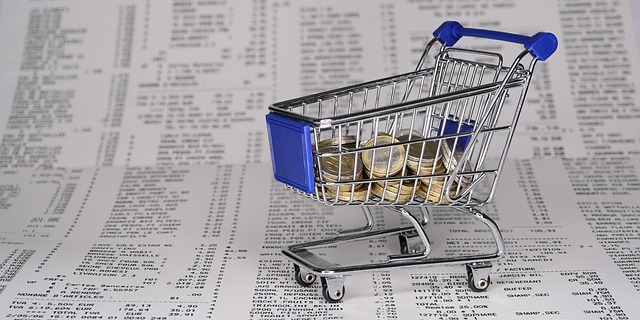Understanding Financial Independence
To embark on creating a debt-free plan that leads to financial independence, you first need to grasp what financial independence means. Essentially, it implies having sufficient personal wealth to live without relying on a paycheck. But why does this resonate so profoundly with people? The pursuit of financial independence opens doors. It creates the chance to live on your terms, pursue passions, and secure your future. Imagine reducing your work hours because you don’t have to chase after bills. Wouldn’t that feel liberating?
Financial independence often requires a lifestyle overhaul. It shifts our focus from immediate gratification to long-term benefits. Many individuals struggle with understanding how to weigh current desires against future needs. This conflict leads to debt accumulation. Debt often acts as a chain that binds us to our current lifestyles, making it hard to envision a different reality. When you’re deep in the cycle of monthly payments, it can feel impossible to navigate towards financial freedom. However, recognizing this cycle is the first step in breaking free.
In this context, achieving a debt-free plan becomes essential. A clear plan not only guides your financial decisions but empowers you to move towards a life without financial burdens. Imagine the peace of mind you’ll gain from knowing that your hard work pays off without any strings attached! But how can you move from understanding the concept of financial independence to implementing a practical debt-free plan? This journey is filled with steps and strategies that we will detail extensively.
Assessing Your Current Financial Situation
To craft a solid debt-free plan, begin with an assessment of your current financial landscape. This assessment acts as your baseline. It might feel daunting to confront your finances, but honesty is crucial. Start by listing all your debts, expenses, and sources of income. What do you owe? To whom, and when is each payment due? On the flip side, track your income – both recurring and irregular. This detailed recording illuminates where your money is currently directed.
Next, evaluate your spending habits. Most people operate on autopilot, not realizing where their money disappears. Perhaps you frequently dine out or subscribe to multiple streaming services. It’s the small expenditures that add up, contributing to a larger cycle of entitlement. Identifying these spending habits is key. Are you investing in experiences, or are you merely satisfying immediate cravings? This reflection often leads to enlightening discoveries. With this comprehensive overview, you can dive deeper into determining where adjustments are needed.
Meanwhile, collect information about your assets too. What do you own? This could be anything from a car to high-value collectibles. Understanding your net worth gives you perspective. Are you gradually moving towards wealth, or are you sinking deeper into debt? This awareness crystallizes your motivation to eliminate debt, as it juxtaposes your liabilities against your assets. Creating a debt-free plan without recognizing where you stand limits your effectiveness. This foundational understanding is where the journey truly begins.
Setting Clear Financial Goals
After assessing your financial situation, the next logical step is setting clear financial goals. Without goals, crafting a debt-free plan resembles sailing without a compass. Goals provide direction and purpose to your financial journey. So, what should your goals look like? They should be specific, measurable, achievable, relevant, and time-bound—this methodology is widely known as SMART goals. For instance, instead of vaguely saying you want to pay off your credit card debt, you might say, “I aim to pay off $5,000 in credit card debt in 12 months.”
Choose a timeframe that suits your needs. Break down larger goals into smaller, manageable chunks. This segmentation not only makes your targets feel less overwhelming but also allows for celebration along the way. Each small victory reinforces your commitment to the larger goal of achieving financial independence. Additionally, this process encourages regular evaluation. Are you on track? How can adjustments be made when necessary?
Moreover, consider setting diverse goals within your larger objective. For example, create short-term goals like building an emergency fund, alongside long-term aspirations like saving for retirement. Striking this balance prevents monotony in your financial journey. Each milestone achieved fosters motivation to tackle the next financial hurdle. Remember, the clarity in your goals addresses the “why.” Identifying personal reasons for pursuing financial independence deepens your motivation. It helps transform willpower into sustained action.
Crafting Your Debt-Free Plan
Now that you have clarity around your financial situation and goals, it’s time to craft your debt-free plan. Think of your plan as a roadmap toward financial independence. Start by prioritizing your debts. Use tools like the avalanche or snowball methods. The avalanche method focuses on paying off debts with the highest interest rates first. The snowball method, on the other hand, emphasizes tackling smaller debts first for quick wins. Choose the approach that aligns best with your personality and motivates you.
Next, outline a monthly budget. A solid budget keeps spending in check while allocating funds toward your debt repayment. Use apps or simple spreadsheets to track every dollar. This might sound tedious, but financial mindfulness leads to progressive changes. Identify non-essential expenses you can reduce or eliminate entirely. Maybe you can skip the daily coffee run or find free entertainment alternatives. Each dollar saved becomes a dollar put towards your debt.
Moreover, consider alternative income streams. Could you freelance or start a side hustle? The gig economy offers countless opportunities to boost your income. The more you earn, the quicker you can pay off debt and transition towards financial independence. In essence, your debt-free plan must adapt to your lifestyle, balancing cutting unnecessary costs with generating new income. Keep your budget flexible, adjusting as life unfolds. This adaptability allows you to maintain your momentum, even when the unexpected arises. Remember, a proactive mindset is essential on this journey.
Building an Emergency Fund
No debt-free plan would be complete without establishing an emergency fund. This fund acts as your safety net, providing security during tough times. Think of it as a buffer between you and potential financial disasters. Unforeseen expenses can derail even the best-laid plans, and an emergency fund helps you avoid accruing more debt by covering urgent costs outright.
So, how much should you save? Financial experts typically recommend having three to six months’ worth of living expenses saved. This amount provides a substantial cushion, allowing you to navigate life’s unpredictabilities without resorting to credit cards. Start small if you need to. Begin by saving a few hundred dollars. Gradually build it to larger amounts as your financial situation improves. Anticipate circumstances that could require your emergency fund: medical emergencies, car repairs, or job loss.
When setting up your emergency fund, keep it in a save account that is easily accessible, but separate from your daily spending. Avoid mindlessly dipping into this fund for non-emergencies; it’s meant to be a fortress against life’s unexpected challenges. Your emergency fund becomes a crucial pillar in your debt-free plan. With it in place, you significantly reduce your risk of relying on credit cards or loans during emergencies, thus further solidifying your path towards financial independence.
Staying Motivated Through the Journey
As you strive to achieve a debt-free plan, maintaining motivation is critical. The journey can be long and arduous, and moments of doubt will inevitably arise. Celebrate small victories. Did you manage to pay off a minor debt? Great! Treat yourself, even if it’s modestly. These celebrations bolster morale, reminding you that each step forward is significant.
Also, surround yourself with supportive individuals. Sharing your goals with family or friends creates a sense of accountability. They can encourage you during tough times, reminding you why you started this journey. Joining financial communities, online or local, introduces you to others who share similar goals. You’ll find valuable tips, encouraging stories, and a wealth of knowledge.
Track and visualize your progress. Charts or graphs showing debt reduction can serve as powerful motivators. Seeing numbers decline brings a sense of accomplishment that reinforces your drive. Revisit your goals periodically. Are they still aligned with your values? Modify them as necessary to keep them relevant and inspiring. Financial independence isn’t just about numbers; it’s about the freedom and peace of mind that comes with living within your means and feeling secure about your choices.
FAQs
- What is included in a debt-free plan?
- A debt-free plan includes assessing your debts and expenses, prioritizing repayments, creating and adhering to a budget, and setting clear financial goals. It also involves building an emergency fund to prevent further debt accumulation.
- How can I start creating a debt-free plan?
- Start by assessing your current financial situation, listing all debts, and observing your spending habits. From there, you can set SMART goals and craft a budget tailored to your personal finance needs.
- Is it essential to have an emergency fund while paying off debt?
- Yes, having an emergency fund is essential. It provides a buffer against unexpected expenses, reducing the likelihood of accumulating additional debt when unforeseen situations arise.
- How long does it typically take to become debt-free?
- The time it takes to become debt-free varies widely based on your debt amount and repayment strategy. Some individuals may achieve this in a few months, while others may take years. Consistency and commitment are key!
- Can I shorten the time to financial independence?
- Yes, you can accelerate your journey to financial independence by increasing your income, minimizing expenses, and aggressively paying down debt. Smart investing can also play a significant role in wealth accumulation.



